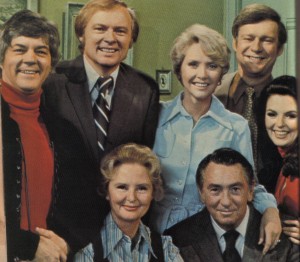
According to Albert Moran, One of the fundamental features that give a television show its soap opera title is “that form of television that works with a continuous open narrative.” While Spanish-language “telenovelas” are usually known as “soap operas,” telenovelas have issues in each season that get resolved and a definite ending after (more or less) a year of daily weekday airing. But with soap operas, each episode ends with a “cliffhanger” or a promise that the storyline is to be continued in another episode.
Soap opera narratives run simultaneously, weaving in and out of one another like a DNA sample. One storyline ends and helps lead into the next developments. One episode of a soap opera will usually change up between various separate coexisting narrative threads that may at times intersect and involve one another- or these narrative threads may run completely parallel to each other, never affecting each other’s plotline. Each episode may feature some of the show’s current storylines, but not always all of them. Daytime serials are usually aired every day of the week and contain some kind of revolution within the story’s plotline and its actors so that any given storyline or actor may be featured in some but generally not all of the episodes of the week. Evening soap operas usually air one episode a week. These soap operas always feature the entire cast in each episode, and in each episode, every narrative thread of the program’s storyline is featured. The seasons of evening soap operas normally take up only a chunk of the year, and these soap operas are usually the ones that bring everything to a dramatic halt at the end of the season, leaving the audience with a cliffhanger- wanting to know what happens next.

Jessia Kowalski via Getty Images
What are themes of a good a soap? Click “Next” to find out.
